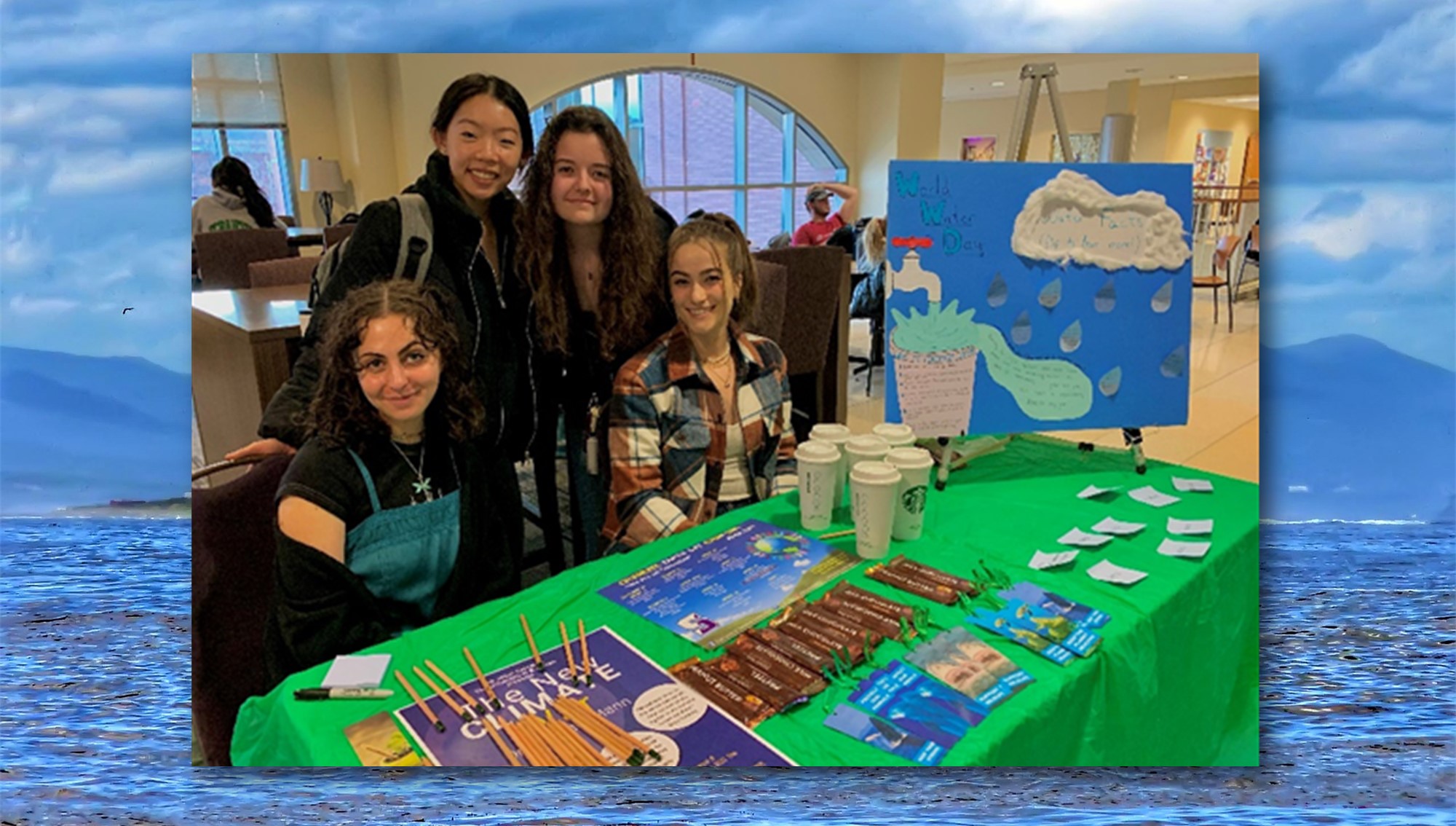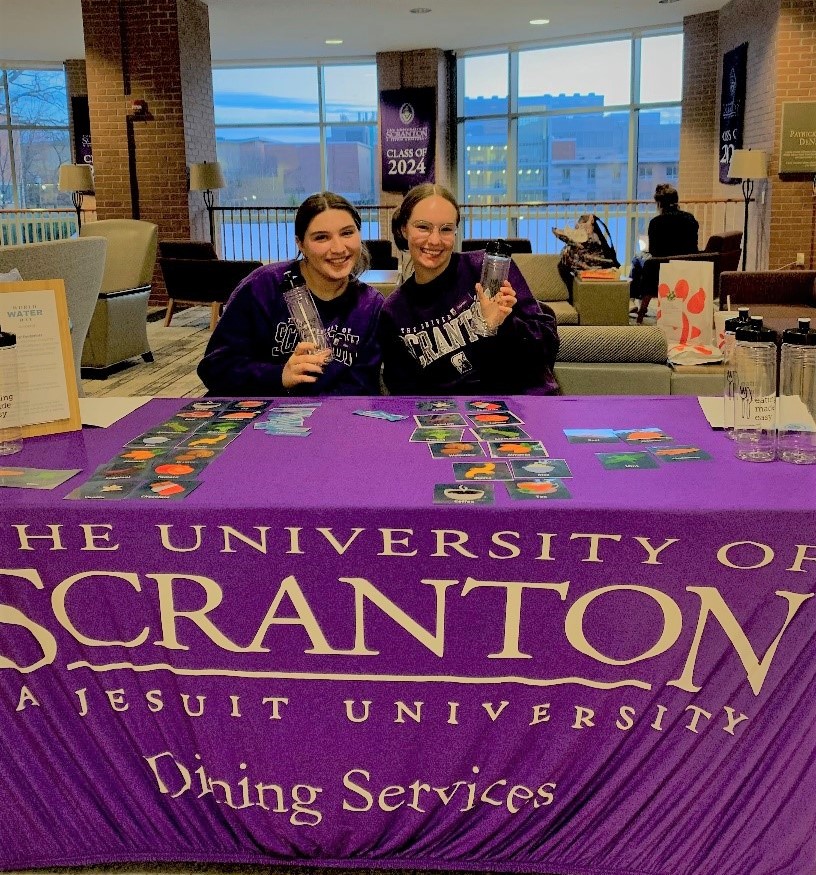University Celebrates World Water Day

On Tuesday, March 22, ARAMARK, the Office of Sustainability, Society for Conservation and Sustainability and the Multicultural Center celebrated our favorite natural resource — water!
World Water Day commemorates freshwater and brings awareness to the 33 percent of the world’s population that lacks access to safe drinking water. The reality that water is a limited resource is often unknown or neglected. However, with only 3 percent of the world’s water being freshwater, and a mere 1 percent considered drinkable, the global water crisis is one that deserves more recognition when tackling sustainable development.
The Office of Sustainability tested students' knowledge of water with questions like how much is the ocean expected to rise in the next 25 years? What percentage of recent natural disasters have been water-related? Every 1 dollar invested in safe water yields how much economic return? The answers are 1 foot, 74 percent and $6.80, accordingly. If you got the right answer, you were able to pick from prizes like Gertrude Hawk chocolate and reusable Starbucks cups. We raised awareness with nearly 200 students, many of whom admitted they had not known the severity of the world water crisis.

ARAMARK compared pairs of different crops and livestock, asking which of the pair required more water. If you didn't get a chance to test your knowledge, here are a few examples — chocolate or vanilla, broccoli or asparagus, and chicken or beef? The answers are vanilla, asparagus, and beef! Those who participated got a reusable water bottle!
The University of Scranton demonstrated its commitment to water conservation. A few years ago, the University installed low-flow toilets. Five hundred fifty toilets across campus were replaced with these water-conserving models, which saves 7.5 million gallons per year! Although World Water Day has passed, being mindful of your water usage is a perfect way to implement sustainable practices for Earth Month. Some ways to do this are:
- Decreasing consumption of unnecessary goods. 1/3 of our water consumption comes from clothing and electronics
Use a reusable water bottle. One plastic water bottle takes 1.4 gallons of water to produce
Eat less meat and animal products. The agricultural industry is the leading cause of water pollution and degradation
Buy local, organic produce. Industrialized agriculture uses approximately 3 times more water than crops require, which wastes between 50-80 percent of irrigation water through leaks, runoff, and evaporation
Check your water pipes for leaks. We unknowingly lose approximately 20-50 percent through pipe leakage and stopping the leakage could also save 10 percent on our water bills
Supporting organizations that are tackling the world’s water issue. Some good ones are Charity: Water, Drop in the Bucket, Thirst Project, and Splash.






